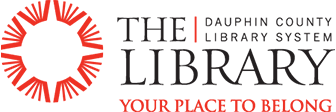
Amy Zimmers knew that Girls Who Code would benefit some of her students, who were showing signs of computer brilliance. But she also knew that some parents lack the ability to drive their kids to after-school or evening activities, and many work at night.
So, as a teacher at St. Stephen’s Episcopal School, Harrisburg, Zimmers got access to Girls Who Code through The Library. She figured she would muddle through as facilitator, until her McCormick Riverfront librarian called to say that she got permission to lead meetings during the school day.
“Girls Who Code was really beneficial,” Zimmers said. “A couple of girls in my class last year were very interested in computer science, and they really enjoyed it. I was thrilled. It was such a great experience.”
What are you reading?
Right now, I’m reading “Building Thinking Classrooms in Mathematics,” by Peter Liljedahl. I read it over the summer, and I’m still referencing it and going back to it. I also read “The Book Woman of Troublesome Creek,” by Kim Michele Richardson. It’s about librarians in Kentucky who delivered books by packhorse in Kentucky in the 1930s. It’s also about the “blue people,” who had a genetic condition that turns people blue because they have the ferric form of iron in their blood instead of ferrous. It was very interesting, science-y kind of historical fiction.
Why that book?
I love true stories. It had some truth in it like the “blue people,” and the packhorse librarians. Those women really risked their lives delivering library books to remote areas of Appalachia. A lot of people weren’t pro-education, and they would get shot at. You see how important it is that someone’s willing to risk their life to bring education and reading and learning to remote communities. It’s definitely inspiring.
As a teacher, what does The Library mean to your students and their families?
The Library is an invaluable resource that adds so much to my curriculum. It takes it to the next level and makes lessons more engaging for students. I feel like it lasts longer in their memory when they see something firsthand. It’s not just learned and lost. It has a lasting impact. We have all these resources to help us along, especially in areas where we might not know as much, and technology and libraries really fill that gap.



